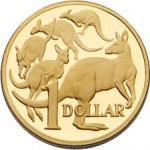DATA NEWS We love data!
Puzzling numbers on jobs, homes and gambling
Some wild and wonderful data numbers this week as the nation headed into the Christmas break and none were more amazing than those volatile job numbers.
With most economists predicting a slight increase in the unemployment rate the numbers hit the market like a sledgehammer. Jobs up 71,400 in November after and equally impressive 56,100 (revised) in October. Full-time jobs rose by 41,600.
The Australia dollar jumped and the stock market tanked for the same reason: No rate cut from the Reserve Bank in the foreseeable future.
The RBA board doesn’t meet again until February and a few economists were even predicting we might even see rate rises by the end of next year.
That’s a bit of a stretch with plenty of industries tightening up on costs (read jobs) next year, ie mining, energy and resources in general, and of course the end of the car industry.
But those job figures will give the RBA something to think about over the holiday period.
Look how CommSec described the numbers:
* The biggest two-month jump in employment for 28 years.
* Job gains averaging 32,000 a month over the past six months against 29,000 over the past year.
* Female jobs up 54,000 in November. The biggest monthly lift in female jobs in almost 30 years and biggest annual gain in female jobs (224,600) on record.
As CommSec’s Craig James pointed out next Thursday’s job composite numbers will give investors an insight into where all these jobs are being creating.
NO LIGHTS ON IN MELBOURNE
Let’s look at some other interesting numbers in the property sector. In Melbourne a lot of people got excited by how many homes were standing vacant.
According to Prosper Australia there were 82,724 properties, or 4.8 percent of the city’s total housing stock, standing empty. This was put down to local investors and foreign buyers being happy to forego rent and concentrate on capital gains and/or buyers who were rich enough to be able to landbank for one reason or another.
The one salient point was that with the Australian property market definitely cooling a lot more property than anticipated could come back to market. Good news for first-home buyers.
On that investor front tightening credit at the big banks is definitely having an effect. Tougher rules limiting lending growth for investors to 10 per cent a year has been followed up by this week’s announcement from the Australian Prudential Regulation Authority that the big four banks and Macquarie Bank must hold more capital against their big mortgage books to provide a buffer against defaults. This was one of the reasons for the recent small hike in mortgage rates.
So if investors can’t count on capital gains what are they getting on rents? Well it’s still not too bad with CoreLogic RP Data showing average rents in Sydney rose 2 per cent from a year earlier to $595, Melbourne up 2.1 per cent to $449. Other capital cities have barely moved up with Darwin suffering the biggest fall – down 13.5 per cent – followed by Perth (7.4 per cent) and Brisbane (0.3 per cent).
Corelogic points out future rent growth will be impacted as more supply hits the market.
NOT TAXED TO THE BEST EFFECT
Some interesting statistics at the end of a recent Financial Review article, which might help, explain why we’re having a vigorous taxation reform debate at the moment.
The OECD Revenue Statistics report shows Australia’s 10 per cent GST rate is well below the OECD average rate of 19.2 per cent.
In terms of the structure of tax revenues in the Australia, the report found 18 per cent came from taxes on corporate income and capital gains – this is the highest in the OECD (out of 34 member countries).
And 39 per cent came from taxes on personal income, profits and gains – the second highest in the OECD.
Australia’s take of property taxes was 9 per cent – the fifth highest in the OECD.
When it came to direct taxes, 28 per cent came from taxes on goods and services – the 22nd-highest in the OECD.
LESS GAMBLERS, BIGGER BETS
And lastly we’re still a nation of gamblers but not as many as before. The recent national accounts revealed that Australian punters bet a record $6.5 billion in the September quarter, equating to $1000 a year for every Australian.
While two out of three Australian adults have a flutter, that number is waning. At the turn of the century it was four of five. So while there are fewer gamblers, with each year that passes they are betting more heavily. It may be because in this technological age there’s more opportunity.
However, the biggest gambling spend still comes on Australia’s 200,000 poker machines but online gambling, and sports betting in particular, is the fastest-growing area.

